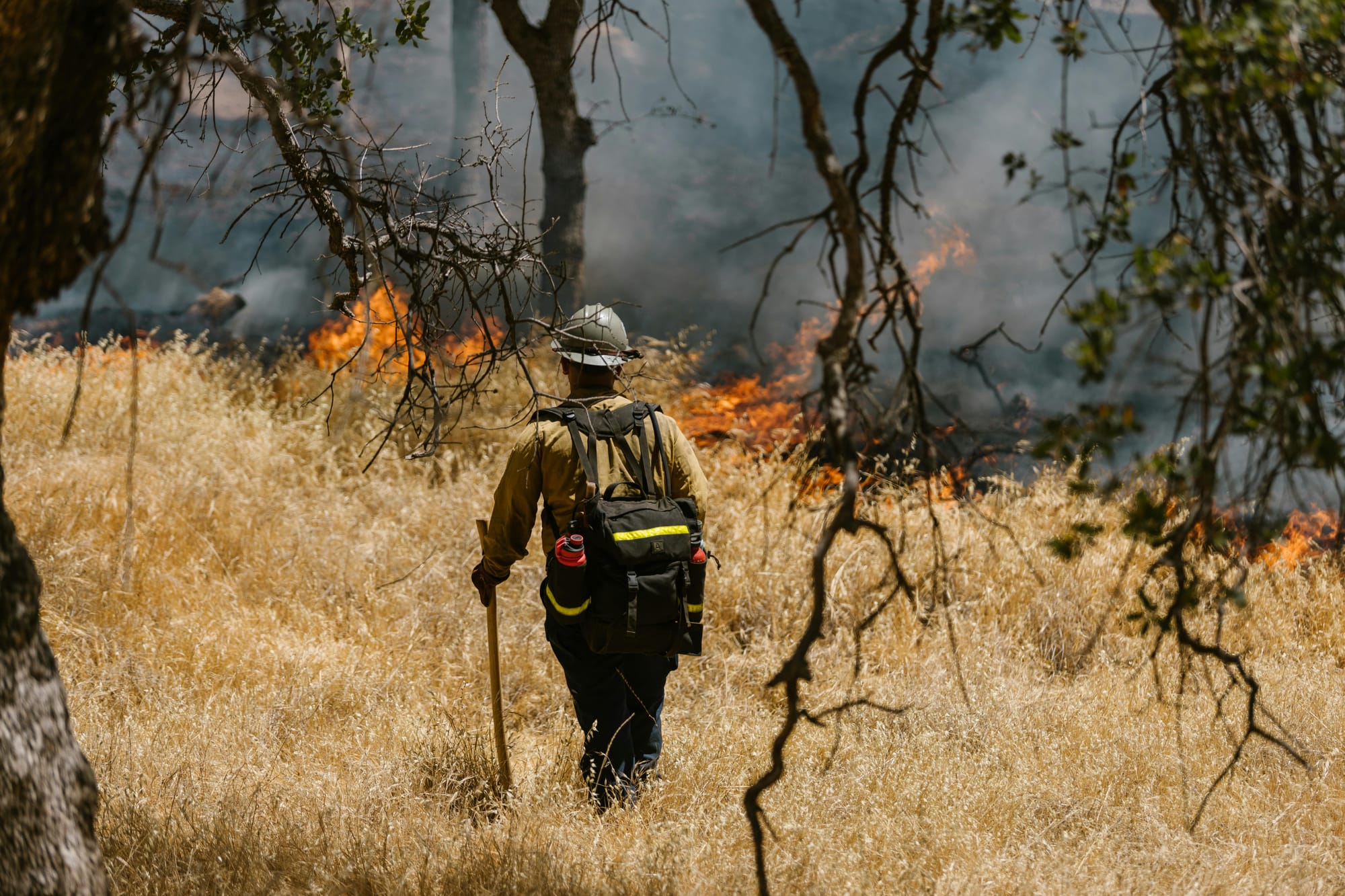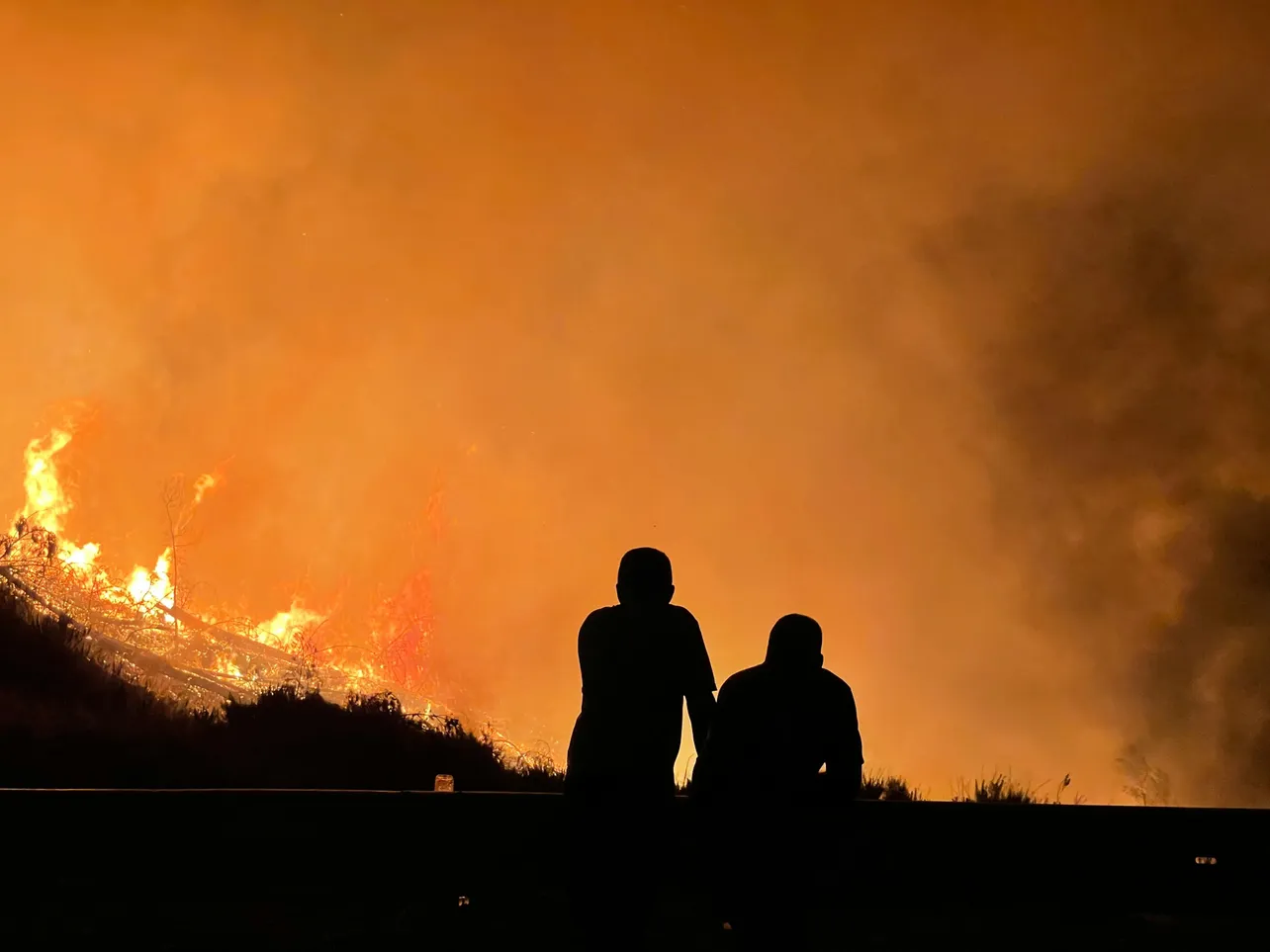As dusk fell around 6:30 p.m. on January 7, 2025, flames tore across the San Gabriel foothills, reaching the edge of Altadena. There were 30 deaths across the region—18 in the Eaton fire and 12 in the Palisades fire. All but one of the deaths from the Eaton fire came from a single community: West Altadena.
In parts of Altadena, there were no sirens. Just silence. No alerts. Just confusion. No orders to evacuate. Only a smoke screen and the sickening realization that help wasn’t coming.
In the months since, over 1,200 Altadena survivors shared what they saw, felt, and lived through in an independent Altadena Resident Impact Survey and Evaluation (ARISE), conducted by The Future Organization. Their responses form one of the most detailed community-driven accounts of the Eaton Fire’s aftermath—and the trail of neglect that fueled it.
The survey paints a pattern. Layer by layer, it captures how a cascade of factors—before, during the chaos, and in the days after— contributed to the conditions that led to 18 deaths.
As part of ARISE, survivors provided firsthand accounts. While left out of the main report, they’re impossible to ignore. These testimonies were shared exclusively with Lotus Rising LA.
“I’m angry my town is gone. No emergency alerts, no sirens, nothing. I left only because the sky over my house turned orange,” one ARISE survey respondent said.
“If not for my neighbors, I would never have known how urgent it was to leave,” another added. “We felt completely abandoned by first responders and Los Angeles County.”

Systems That Weren’t Built to Protect Everyone
The Eaton Fire in Altadena caused the most destruction, leveling over 9,400 buildings, far more than the 6,800 structures lost in the Palisades Fire. Yet, Altadena residents were among the last to receive official evacuation orders. Some never got them at all.
- 65% lost power before they could evacuate—and nearly 70% of them said it disrupted their ability to get out safely.
- 86% of ARISE respondents felt the County failed to warn them in time
Slightly more than half of Altadena residents first became aware of the Eaton fire before 7 p.m. (average time was 7:19 p.m.), according to ARISE. However, only 38% of residents reported receiving an evacuation order – an order that came much too late (around 11:19 p.m. on average).
“I only knew to leave because my neighbor called screaming that the hills were glowing red,” one resident explained to ARISE. “We ran with just our kids and a photo album.”
According to the ARISE report, both communication and power failures complicated evacuations and exacerbated pre-existing inequities. Black, Latino, and lower-income households were the most likely to be left in the dark, both figuratively and literally. They received alerts later, lost power more often, and had fewer resources to grab what they needed and go.
“It’s frightening how many people didn’t get an evacuation text,” another said in the survey. “We banged on a neighbor’s door at 3 a.m. They might have died otherwise.”
Meanwhile, neighboring cities like Pasadena and La Cañada Flintridge blasted emergency alerts across every available channel—text systems, social media, news broadcasts, even knocking on doors. Altadena, by contrast, stayed silent.
Unincorporated, Unheard, Unprepared
Altadena, an unincorporated community governed directly by Los Angeles County, relies on the county for all emergency operations, unlike incorporated cities that manage their own. In short, there was no local infrastructure in place to warn residents or coordinate a response. Altadena has no city council. No emergency manager. No local command post to call the shots.
So when the fire came, no one nearby held the reins. County agencies were technically in charge, but physically, they were miles away.
Next door, Arcadia’s fire chief didn’t wait. He ordered evacuations early. Pasadena jumped into action, blanketing local radio and TV with updates. La Cañada Flintridge opened its emergency operations center within hours.
Altadena? It stalled. Residents watched the smoke roll in, then waited for word. No one gave it in time.
“Social media was flooded with smoke photos before any official notices. That was our cue to pack and go,” one resident recalled to ARISE.

These aren’t isolated accounts. A Wall Street Journal investigation found the county failed to activate all of its alert systems the night the fire broke out. Nearly a third of its frontline fire engines and half of its water-dropping helicopters were out of service that night due to maintenance issues.
One man, Shaw Zhao, flew to Los Angeles after losing contact with his 84-year-old father, a West Altadena resident with mobility issues. He found his father’s remains the next morning.
His family—like many others—relied on alerts that never came.
But the Eaton fire only confirmed what many in Altadena already knew to be true: the county wasn’t looking out for them.
ARISE found:
- 5% of households were invited to any disaster preparedness meeting the year before.
- 11% received a fire hazard inspection from the County in 2024.
- 63% said Altadena receives inadequate County services.
- 70% felt politically overlooked. For Black and Latino community members, that number climbed to nearly 80%.
“This was a terrifying tragedy that could have been prevented if Los Angeles County forced homeowners to clear brush and upgrade defenses,” one ARISE respondent wrote.
Neighbors Became the Emergency Alert System
Without official guidance, folks in neighborhoods like The Meadows, Millard Canyon, and Canon took matters into their own hands. ARISE found that between 73% and 89% of households in these areas relied on self-protection—checking on neighbors, packing go-bags, and helping elders into cars. In many cases, they were the alert system.
But even the best-prepared families ran into roadblocks.
“We lost power first, so our phones died,” one family explained to ARISE. “We drove out blind, with no idea how close the flames were.”
Supplies were scarce. Timing was tight.
Only 27% left with protective gear like masks or goggles, ARISE found. Few had time to grab medications or documents. Less than 1% could afford private firefighting services.
“We packed a light bag when we heard about the fire, but roadblocks and downed trees almost trapped us on the way out,” one ARISE respondent recalled.
“My elderly mother with dementia was being checked into a clinic while I tried to rescue our dogs,” another described. “Getting them out was my only focus.”

Supervisor Kathryn Barger, who is Altadena’s “de facto mayor,” called the Eaton Canyon evacuation what it was—an “epic fail”. She introduced a motion for an investigation into the County’s emergency alert and evacuation systems, a review that remains in progress.
Barger has warned against reading too much into this one failure. She said the missteps in Altadena don’t necessarily point to a broader problem. But on the ground, residents don’t need an external report to tell them the system broke down.
“It’s a catastrophic failure,” said Seriina Covarrubias, an organizer with California Unincorporated who lives in the area. “There was no centralized communication. No one was calling the shots. It was a hot mess.”
Rebuilding and Readiness—With Equity
Altadena is far from being at peace with what happened, and the community is clear about what needs to change. They’re demanding emergency systems that work for everyone, not just affluent neighborhoods with political will or incorporated city status.
“People need money—$770 in aid is a joke after losing everything,” one ARISE survey respondent said. “Fear of serious debt is keeping families from rebuilding.”
“We worry how long it will take to make Altadena livable again,” another respondent said, “and whether state and federal support will actually arrive.”
"The mental and emotional toll is huge—every step of debris removal and rebuilding feels impossible, " someone else shared.
We share these stories and findings not to reopen wounds, but to demand better. The painful truth is that warnings came late, help came slower, and early decisions that could’ve made all the difference excluded the very people who survived the worst of it.
But Altadena isn’t standing still.
Neighbors are organizing. Grassroots efforts are growing. And new nonprofits like Lotus Rising LA are working alongside residents to support what’s already in motion—providing furniture, prefab rebuilds, and multilingual support that reflects the community’s needs and culture.
This is a recovery powered by equity, not charity. A future led by the people who’ve lived the gaps—and are now closing them.
Related Articles:
In Altadena, Immediate Basic Recovery Remains a Challenge—an interview with Anish Saraiya, Director of Altadena Recovery.
We Need to Be Heard by Akeya Harmon Collins, an Altadena native.
Disclaimer: The content shared in our blog is for informational purposes only and should not be considered legal, medical, or financial advice. Please consult with a qualified professional for guidance specific to your situation.

